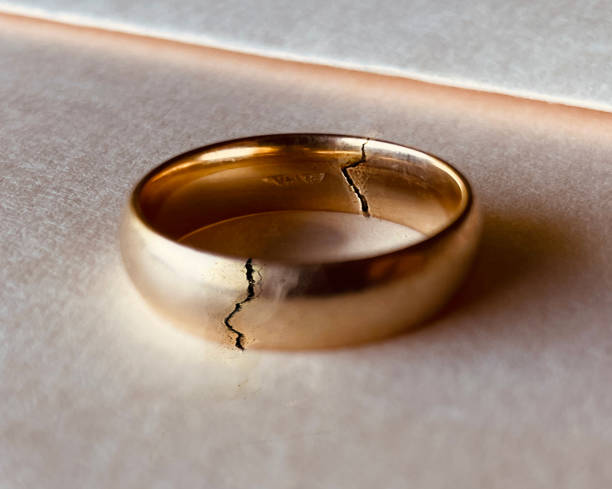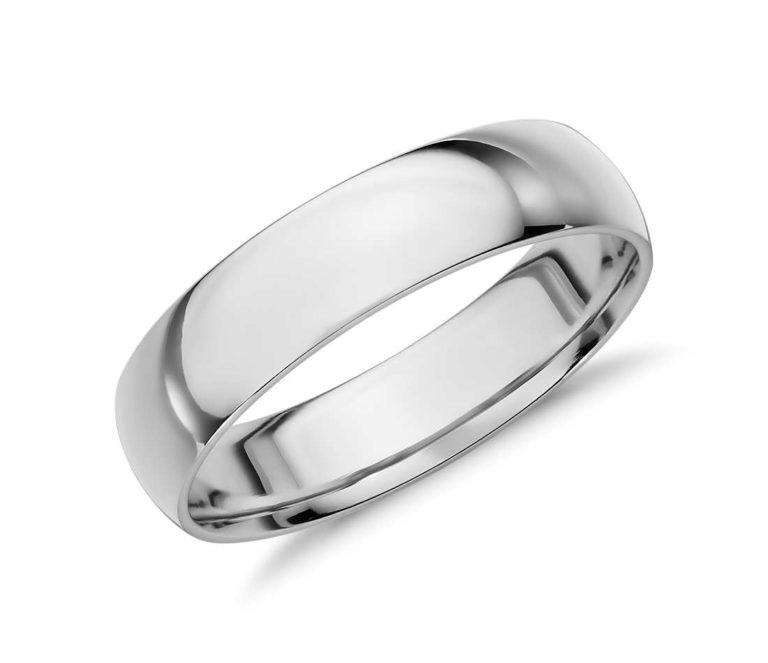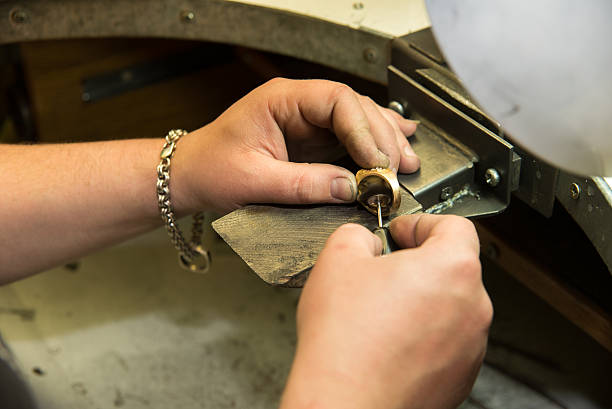
Inconspicuous Indicators That Your Jewelry Needs Repair
Clasps that don't close securely - If your clasp gets stuck open or stuck closed when you put it on, this is a telltale sign that it's in need of repair. Wearing it without repairing it may lead to losing it entirely.
Discolored knots between pearls - The silk string holding your strung pearls together is in contact with environmental elements as well as body oil, and over time this builds up and shows itself through discolored knots. Not only are these unsightly, but they also leave you vulnerable to potential breakage.
Knots being pulled into drill holes on pearls - If the knots between your pearls slip in and out of the drill holes, this is also a sign that it's time to restring. As the thread stretches and pulls into the drill hole, pearls come in direct contact with each other, which can lead to wear and other damage.
Thinning or bent shank (the part of a ring that rests near your palm) - This is the part of your ring that comes in contact with hard surfaces the most, and if it shows signs of erosion or weakness you should schedule a repair before you wear it again.
You don't properly store your jewelry - Fabric lined jewelry boxes aren't just for show; they serve an essential purpose. Metals can scratch, erode, and fatigue when stored improperly. Silver jewelry, for example, should be stored in tarnish proof cloth where it cannot be exposed to air or moisture. Proper storage is a necessary element of jewelry care for all fine jewelry -- your jeweler can help you identify the best storage options for each piece.
You wear your jewelry while swimming, bathing, or showering - Chlorine, salt water, shampoo, conditioner, and even sunscreen can all wreak havoc on your metals and gemstones. If your jewelry has taken a dip in the backyard pool or you find that you often forget to remove your rings before you get in the shower, you may have unseen damage in need of repair.
For more information on identifying the symptoms that your jewelry is in need of repair, read: When to Repair Jewelry
Observable Signs That Your Jewelry Needs Repair

Other Functions Performed by Jewelry Repair Services
Your local jeweler or jewelry repair service can help with far more than just fixing broken jewelry. They also perform necessary maintenance to keep your jewelry looking its best.
Cleaning and Inspection
While cleaning your jewelry at home is necessary to uphold its beauty and integrity; professional jewelry cleaning is unparalleled in its ability to clear away the dirt and grime that conventional cleaning options leave behind. This also allows your jeweler to inspect your jewelry for any issues that may need repair. Frequently, professional cleaning and inspection are provided at no cost by the jeweler who sold you the piece.
Rhodium plating
You may notice a lack of luster or yellowness in parts of your white gold jewelry , which is a natural and expected process. To restore white gold to the bright white finish it held, your jeweler will re-plate it on an as-needed basis.
For more on the typical repairs your jewelry may require, read: Typical Breakages & Repairs

Adjusting Your Jewelry for Size
Beyond repairs, jewelry resizing is a common need not just at the time of your purchase, but throughout the life of each piece. Whether due to weight loss or gain, rings, watches, and bracelets may require resizing for comfort and security. Necklaces may also be adjusted or resized for changes in taste and style or due to metal fatigue and erosion.Whatever the reason for resizing your jewelry, a professional resizing is the only option with consistent, reliable results. Temporary sizers are available for short-term needs, but to ensure you can confidently wear each piece without sacrificing the look or possibly losing or damaging it, you should consult with your jeweler to discuss permanent options.
Other Jewelry Resizing
Resizing services aren't limited to solely rings. You may have bracelets , necklaces, or watches that need to be modified for either comfort or style. Many jewelers offer resizing services for free within a specified time frame after purchases you make at their store and may offer quick resizing on items like linked watches for a small fee if you purchased the item elsewhere.
Learn more about jewelry resizing here: Guide to Jewelry Resizing
Should You Repair or Buy New Jewelry
With certain damages, you may wonder if it's worth it to repair a broken piece of jewelry or if you should buy a new piece. There are several factors to consider when making this decision.
Should You Repair or Modify Broken Jewelry?
If you need to repair your jewelry, it's also an excellent time to consider any modifications you might wish to make to it. Whether you'd like to upgrade a center stone, fuse your wedding band and engagement ring , or repurpose diamonds or gemstones into other pieces of jewelry, you can discuss these options with your jeweler when you visit them for jewelry repairs.You may also have inherited estate jewelry that is in poor condition which you'd like to repair or modify, bringing new life to them by creating new styles you're happy to wear.
You may also have jewelry you or a loved one bought for you which, while you enjoyed at the time, doesn't align with your preferences as it once did. Modification is an option for this scenario, as well, which allows you to maintain the essence of the jewelry you've loved but which style you've outgrown. This cost-effective, environmentally friendly approach will let you preserve the emotional elements of each piece while restyling it so you'll be pleased to wear it again.
Learn more about repairing and modifying broken jewelry in our complete guide here: Repair or Modify Broken Jewelry
Jewelry Repair Turnaround Time
One of the most common questions we get about jewelry repairs is about the turnaround time. When you're looking to repair your everyday jewelry, it only makes sense that you'd like to have it returned to you as quickly as possible. Fast jewelry repair is possible, but it's important to understand why your jewelry repair service is able to provide quick repairs. It's often said that you can have something done fast or you can have it done right, but not both. This isn't the whole story with jewelry repair, but it's important to ask questions and do your research before choosing a service based on the speed of repairs alone.
If a jeweler does not have someone on site who completes their repairs, you may have to wait several weeks for them to work on your piece and return it to you. This is because they need to complete the necessary paperwork to send your jewelry to someone off-site who will then complete your repairs and send it back to the store. Once delivered, it will need to be sorted with the other packages and checked in before you are contacted to pick it up.
If there are any problems when you arrive to retrieve it, they will need to repeat the process, which adds several more weeks to the process. In these instances, fast turnaround is limited by the speed of their processes and delivery. If you are promised a 24-48 hour turnaround on a fix that won't be completed in-house, you'd be wise to be concerned: with shipping and handling already stripped to their fastest possible options, the only other place to shave minutes is in the time spent working on your piece.
Why You Need a Professional for Jewelry Repair
While many people consider price and turnaround time when looking for a jewelry repair service, it's important to give careful consideration to the quality and experience of a jeweler's work. They should be able to show you pictures of past repairs and should be comfortable discussing their knowledge, expertise, time in the profession, and any certifications with you. You should also look at reviews and testimonials written by past and current clients to get an accurate idea of what you can expect by working with them.
When you've invested in heirloom-quality jewelry, you only want to trust maintenance and repairs to someone with a proven track record of quality repairs and evidence of satisfied customers. Poorly executed repairs are not only unsightly, but they can weaken and devalue your piece, as well.














